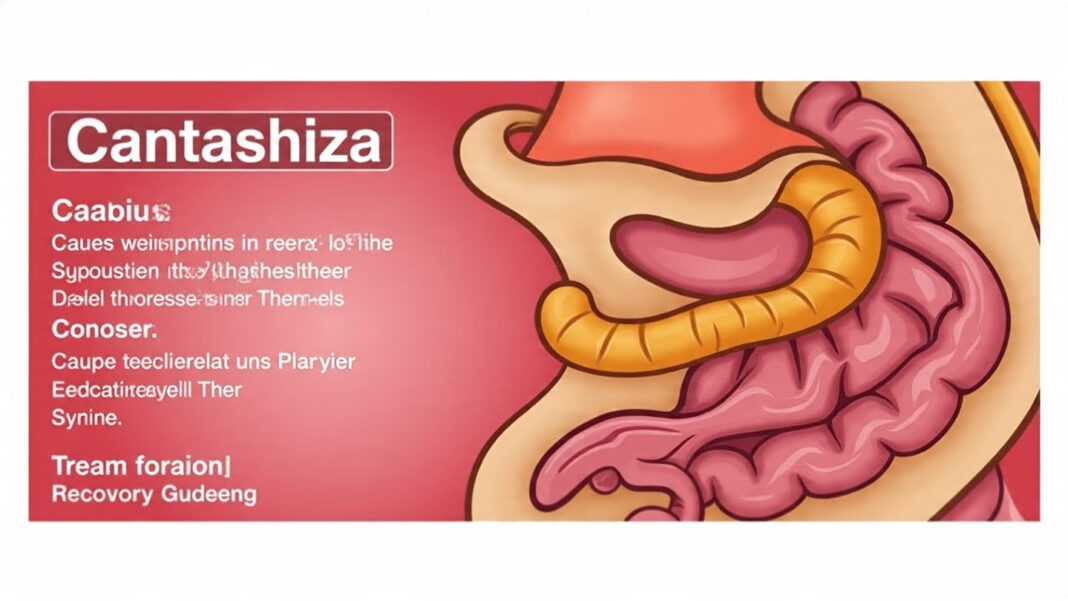Gastroshiza is a rare but serious birth condition where a baby is born with the intestines protruding outside the abdominal wall. While this can sound frightening to new parents, the good news is that with early diagnosis, proper surgery, and supportive care, many infants grow up to live healthy lives.
This article explores the causes, symptoms, treatment options, recovery journey, and daily life management for gastroshiza. If you are a parent, caregiver, or medical student, this guide will help you understand the condition clearly.
What is Gastroshiza?
Gastroshiza is a congenital abdominal wall defect that develops early in pregnancy. Instead of forming inside the abdomen, the baby’s intestines remain outside the body, usually protruding through an opening near the belly button.
This condition requires immediate medical attention and surgical correction after birth.
Signs and Symptoms of Gastroshiza
The most visible sign is intestines outside the abdominal wall at birth. Other symptoms may include:
- Feeding difficulties (trouble latching or accepting formula)
- Vomiting after feeds
- Lethargy or unusual tiredness
- Digestive problems or bowel obstruction
Parents should seek urgent medical care if these signs appear.
Causes of Gastroshiza
The exact cause is unknown, but research points to a mix of genetic and environmental factors:
- Maternal factors – Smoking, alcohol, or drug use during pregnancy may increase risk
- Nutritional deficiency – Low folic acid during pregnancy can affect fetal development
- Genetics – Family history of abdominal wall defects may increase chances
- Environmental toxins – Exposure to harmful chemicals or medications during early pregnancy
Pathophysiology of Gastroshiza
The condition develops when the abdominal wall fails to close properly during fetal growth. This allows intestines (and sometimes other organs) to herniate outside the baby’s body.
Because the organs are exposed, they are at risk of infection, inflammation, or injury, making surgery essential soon after birth.
Diagnosing Gastroshiza
- Prenatal Ultrasound – Often detected around the 12th week of pregnancy
- Post-birth Examination – Visible intestines confirm the diagnosis
- Imaging Tests – X-rays or CT scans may be used to check for bowel damage or complications
Early detection helps parents and doctors prepare for safe delivery and surgery.
Treatment: Surgery for Gastroshiza
Treatment usually involves surgery soon after birth.
- Primary Repair – If the intestines are healthy and not too swollen, doctors place them back inside the abdomen and close the defect.
- Staged Repair (Silo Procedure) – If swelling is severe, a protective covering (silo) is placed over the intestines. The organs are gradually moved inside before final closure.
Post-Surgery Care
- Monitoring bowel function
- IV fluids or feeding tubes until the baby can eat normally
- Infection prevention and wound care
- Gradual transition to regular feeding
Recovery and Prognosis
With timely surgery and medical support, the survival rate for gastroshiza is high.
- Most infants recover well and lead normal lives
- Some may face digestive issues or feeding difficulties in early years
- Regular follow-ups ensure healthy growth and development
Epidemiology and Risk Factors
- Affects 1 in 5,000–10,000 births worldwide
- More common in males than females
- Higher risk in younger mothers (under 20 years)
- Rates vary by geography, with higher prevalence in North America
Prevention and Healthy Pregnancy Tips
While not always preventable, risks can be lowered by:
- Taking folic acid supplements before and during pregnancy
- Avoiding smoking, alcohol, and drugs
- Regular prenatal check-ups
- Maintaining a healthy, balanced diet
- Avoiding exposure to harmful chemicals
Managing Daily Life with Gastroshiza
Parents often face challenges after surgery, but with support, babies thrive.
- Nutrition – Work with dietitians to ensure safe feeding
- Follow-ups – Regular visits to track growth and gut function
- Emotional support – Counseling or support groups can help families cope
- Physical activity – As the child grows, safe exercise encourages recovery
Conclusion
Gastroshiza may seem overwhelming, but knowledge, early diagnosis, and proper treatment can make a world of difference. With modern surgical methods and supportive care, most babies recover successfully and lead fulfilling lives.
FAQs About Gastroshiza
1. Is gastroshiza the same as omphalocele?
No. In gastroshiza, the intestines are exposed without a protective sac. In omphalocele, they are covered by a membrane.
2. Can gastroshiza be detected before birth?
Yes, it can usually be seen on an ultrasound around 12–14 weeks of pregnancy.
3. What is the survival rate for babies with gastroshiza?
With timely surgery, survival rates are over 90% in developed healthcare systems.
4. Do babies with gastroshiza have long-term health issues?
Some may face digestive problems, but many live normal, healthy lives with proper care.
5. Can parents prevent gastroshiza?
Not completely, but healthy pregnancy habits—including folic acid, no smoking, and regular checkups—can lower risks.

